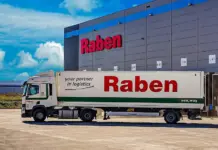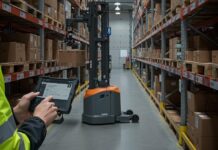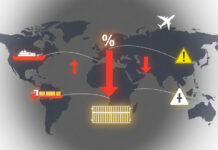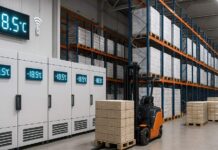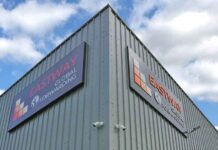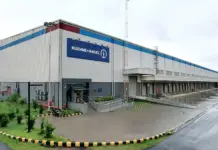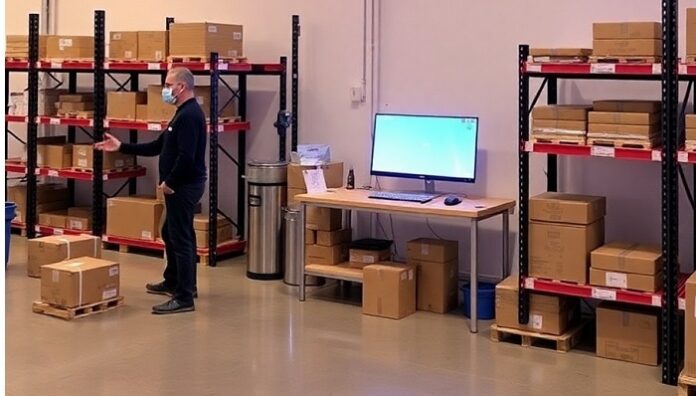As consumer demand for faster delivery times intensifies, many businesses are reevaluating their last-mile delivery strategies to keep up with expectations. Research indicates that a significant number of online shoppers now expect same-day delivery, and some even anticipate receiving their orders within just a few hours. To meet these high expectations, third-party logistics (3PL) providers are turning to micro-fulfillment centers as a solution to improve speed and efficiency in their delivery networks. These centers, often strategically located close to urban populations, are transforming how 3PLs manage last-mile delivery, enabling them to fulfill orders more rapidly and cost-effectively.
Understanding Micro-Fulfillment Centers
Micro-fulfillment centers (MFCs) are small, localized warehouses designed to house inventory close to consumers, typically within urban or densely populated areas. Unlike traditional large-scale warehouses positioned on the outskirts of cities, MFCs focus on maintaining high-demand items in compact spaces that allow for faster last-mile deliveries. By positioning inventory within easy reach of urban customers, MFCs cut down on transit time and streamline the fulfillment process. This setup not only allows for same-day deliveries but also minimizes last-mile logistics costs.
The growing use of MFCs is reshaping last-mile delivery, the final stage of order fulfillment where goods move from the warehouse to the customer’s doorstep. In contrast to conventional warehouses, which can take days to fulfill deliveries, micro-fulfillment centers enable 3PLs to complete deliveries within hours by drastically reducing the distance between products and end consumers.
The Role of Micro-Fulfillment Centers in Last-Mile Delivery
For 3PL providers, micro-fulfillment centers are game-changers, particularly for last-mile delivery operations. As customer demand for fast shipping grows, MFCs allow logistics companies to fulfill orders from local hubs rather than central distribution centers. This setup reduces not only delivery times but also costs, since products don’t need to travel long distances to reach customers. Traditional warehouses, often situated on the outskirts of cities where space is more readily available, aren’t ideally located for same-day delivery services. By situating MFCs within or close to urban centers, 3PL providers can ensure that goods are available closer to consumers.
Micro-fulfillment centers can be set up in a variety of spaces, including unused basements, vacant retail units, or other underutilized urban properties. These smaller-scale facilities don’t require large storage areas and can be optimized to hold fast-moving products that are in high demand, such as consumer electronics or personal care items. By strategically locating MFCs, 3PL providers can offer quicker delivery options, meeting the increasing demand for same-day or on-demand fulfillment.
Benefits of Micro-Fulfillment Centers for Last-Mile Delivery
The adoption of micro-fulfillment centers offers numerous advantages to 3PL providers:
- Enhanced Delivery Speed: With inventory stored closer to end customers, 3PLs can reduce transit times, facilitating same-day or even on-demand deliveries. This setup enables 3PL providers to respond quickly to orders, particularly when paired with efficient logistics planning.
- Cost Savings: The shorter the distance that products must travel, the lower the transportation costs. MFCs reduce last-mile logistics expenses significantly and also decrease the likelihood of damage during transit. Automated processes within MFCs further lower operational costs, creating a streamlined and cost-effective system for fulfillment.
- Local Economic Benefits: MFCs also positively impact the local economy by providing job opportunities within the community, including roles in warehousing, packaging, and facility maintenance. Furthermore, these centers can stimulate indirect economic activity by utilizing local vendors for food, security, and other essential services.
How 3PL Providers Are Adopting Micro-Fulfillment Strategies
3PL providers employ various strategies to successfully implement micro-fulfillment centers into their delivery frameworks. Here are some of the key methods:
- Partnerships with Retailers: Retailers are well-positioned to advance micro-fulfillment initiatives due to their strategic locations in urban areas. They often operate in high-foot-traffic locations that are secure and easily accessible. Many retailers also have experience in inventory management and a trained workforce, making them ideal partners for 3PL providers looking to set up MFCs without heavy investments. By collaborating with retailers, 3PLs can leverage existing infrastructure and inventory management systems, saving time and resources. Retailers can convert part of their floor space or unused back rooms into a micro-fulfillment center, providing storage and fulfillment capacity for local deliveries.
- Utilizing Existing Infrastructure: Since MFCs don’t require large facilities, they can be established in underutilized urban spaces like parking garages, shopping mall storage areas, and former retail spaces. Using existing infrastructure allows 3PL providers to set up MFCs more quickly and cost-effectively compared to building new facilities. This approach is particularly appealing in dense urban areas where real estate is scarce and expensive. By repurposing these spaces, 3PLs can extend their reach into urban markets without the overhead costs of new construction.
Automation’s Role in Micro-Fulfillment Centers
Automation is at the core of micro-fulfillment centers, enabling them to operate efficiently with limited resources. Advanced technologies such as robotics, artificial intelligence, and data analytics play a crucial role in maximizing the effectiveness of MFCs. Here’s how automation benefits MFC operations:
- Accelerated Fulfillment: Automated picking systems and robots streamline the order-picking process, reducing the time needed to locate, retrieve, and pack items. This speed is essential for meeting tight delivery windows, especially for same-day or on-demand orders.
- Inventory Optimization: With real-time data analytics, MFCs can accurately predict inventory levels, ensuring that popular items are always in stock while minimizing overstock. Automation allows MFCs to dynamically adjust inventory based on demand patterns, improving resource allocation and reducing waste.
- Enhanced Delivery Efficiency: Automated routing and tracking technologies optimize delivery routes, making last-mile logistics more efficient. This improvement not only reduces delivery times but also helps cut down on transportation costs, further improving the economic viability of MFCs.
- Labor and Cost Savings: By reducing dependence on manual labor, automation lowers operational costs and minimizes human error. Automation enables MFCs to operate more cost-effectively, allowing 3PL providers to pass these savings on to their clients.
The Benefits of Micro-Fulfillment Centers for 3PL Providers and Their Clients
For 3PL providers, micro-fulfillment centers offer significant advantages that ultimately benefit both the provider and their clients:
- Operational Efficiency: MFCs streamline operations, allowing 3PLs to scale efficiently. By managing inventory and fulfillment locally, 3PLs can improve operational responsiveness and handle fluctuating demand without the need for large-scale facilities.
- Enhanced Customer Satisfaction: Faster and more reliable deliveries lead to better customer experiences. Meeting delivery expectations fosters customer loyalty, which is crucial for both 3PLs and their clients in a competitive market.
- Cost Reductions: By leveraging automation and strategically locating MFCs, 3PLs can reduce last-mile delivery expenses. These savings can then be shared with clients, making it more cost-effective for them to offer faster delivery options.
The Future of Micro-Fulfillment Centers in Last-Mile Delivery
The future of micro-fulfillment centers is set to include even greater reliance on technology and automation. Here are some trends likely to shape the evolution of MFCs:
- Increased Automation: As automation technologies advance, MFCs will become more capable of handling complex logistics operations with minimal manual input. Enhanced robotics, autonomous delivery vehicles, and AI-driven software will make it possible to handle higher order volumes efficiently.
- Integration with Advanced Analytics: Predictive analytics and machine learning will play a larger role in optimizing inventory and demand forecasting, helping MFCs anticipate changes in consumer demand and adjust operations accordingly.
- Sustainability Initiatives: Many 3PLs are looking to reduce their carbon footprint, and MFCs provide a way to cut transportation emissions by decreasing delivery distances. As more companies adopt eco-friendly practices, MFCs can support these goals by enabling local fulfillment and reducing dependency on long-haul logistics.
- Expansion of Urban Centers: As urban populations grow, the demand for MFCs near residential areas will increase. More 3PLs are expected to establish micro-fulfillment centers in city centers and dense metropolitan areas, creating faster and more efficient delivery networks that cater to the urban consumer.
By adopting micro-fulfillment centers as a cornerstone of last-mile delivery strategies, 3PL providers can enhance their operational agility, reduce costs, and provide faster delivery times. MFCs have transformed the logistics landscape, allowing businesses to meet consumer expectations for speed and reliability while optimizing their resources. As MFCs continue to evolve, they promise to be a powerful asset for 3PL providers looking to stay competitive in the dynamic world of e-commerce and on-demand delivery.

